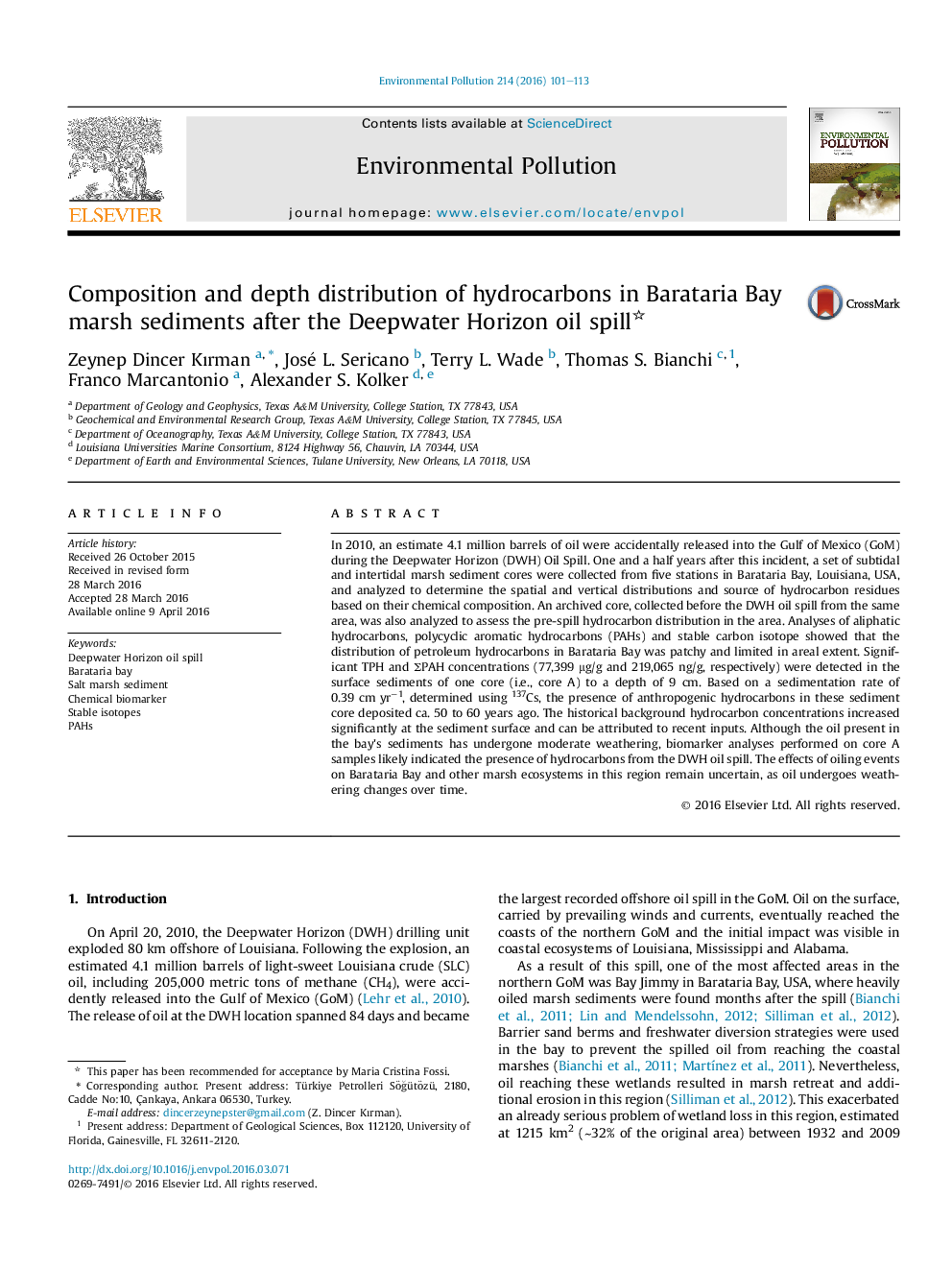| کد مقاله | کد نشریه | سال انتشار | مقاله انگلیسی | نسخه تمام متن |
|---|---|---|---|---|
| 6315200 | 1619159 | 2016 | 13 صفحه PDF | دانلود رایگان |

- Spatial distribution of TPH and ΣPAH values significantly elevated in Core A and were detected to depth of 9 cm.
- In remaining locations, on the other hand, other sources of hydrocarbons are apparent.
- Source identification parameters revealed significant similarities between oil residues in core A, and reference DWH oil.
- Oil underwent only moderate weathering and may continue to have a significant impact on the future health of Bay.
In 2010, an estimate 4.1 million barrels of oil were accidentally released into the Gulf of Mexico (GoM) during the Deepwater Horizon (DWH) Oil Spill. One and a half years after this incident, a set of subtidal and intertidal marsh sediment cores were collected from five stations in Barataria Bay, Louisiana, USA, and analyzed to determine the spatial and vertical distributions and source of hydrocarbon residues based on their chemical composition. An archived core, collected before the DWH oil spill from the same area, was also analyzed to assess the pre-spill hydrocarbon distribution in the area. Analyses of aliphatic hydrocarbons, polycyclic aromatic hydrocarbons (PAHs) and stable carbon isotope showed that the distribution of petroleum hydrocarbons in Barataria Bay was patchy and limited in areal extent. Significant TPH and ΣPAH concentrations (77,399 μg/g and 219,065 ng/g, respectively) were detected in the surface sediments of one core (i.e., core A) to a depth of 9 cm. Based on a sedimentation rate of 0.39 cm yrâ1, determined using 137Cs, the presence of anthropogenic hydrocarbons in these sediment core deposited ca. 50 to 60 years ago. The historical background hydrocarbon concentrations increased significantly at the sediment surface and can be attributed to recent inputs. Although the oil present in the bay's sediments has undergone moderate weathering, biomarker analyses performed on core A samples likely indicated the presence of hydrocarbons from the DWH oil spill. The effects of oiling events on Barataria Bay and other marsh ecosystems in this region remain uncertain, as oil undergoes weathering changes over time.
Journal: Environmental Pollution - Volume 214, July 2016, Pages 101-113